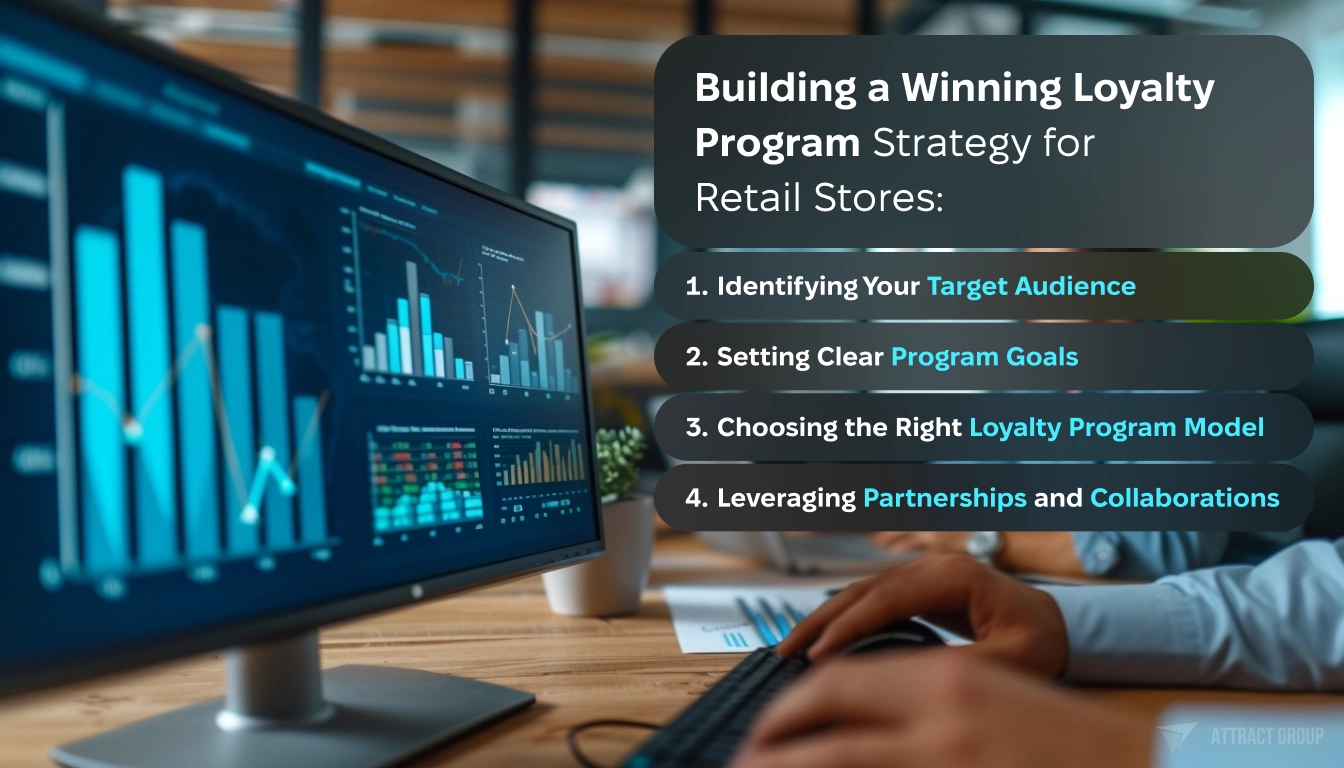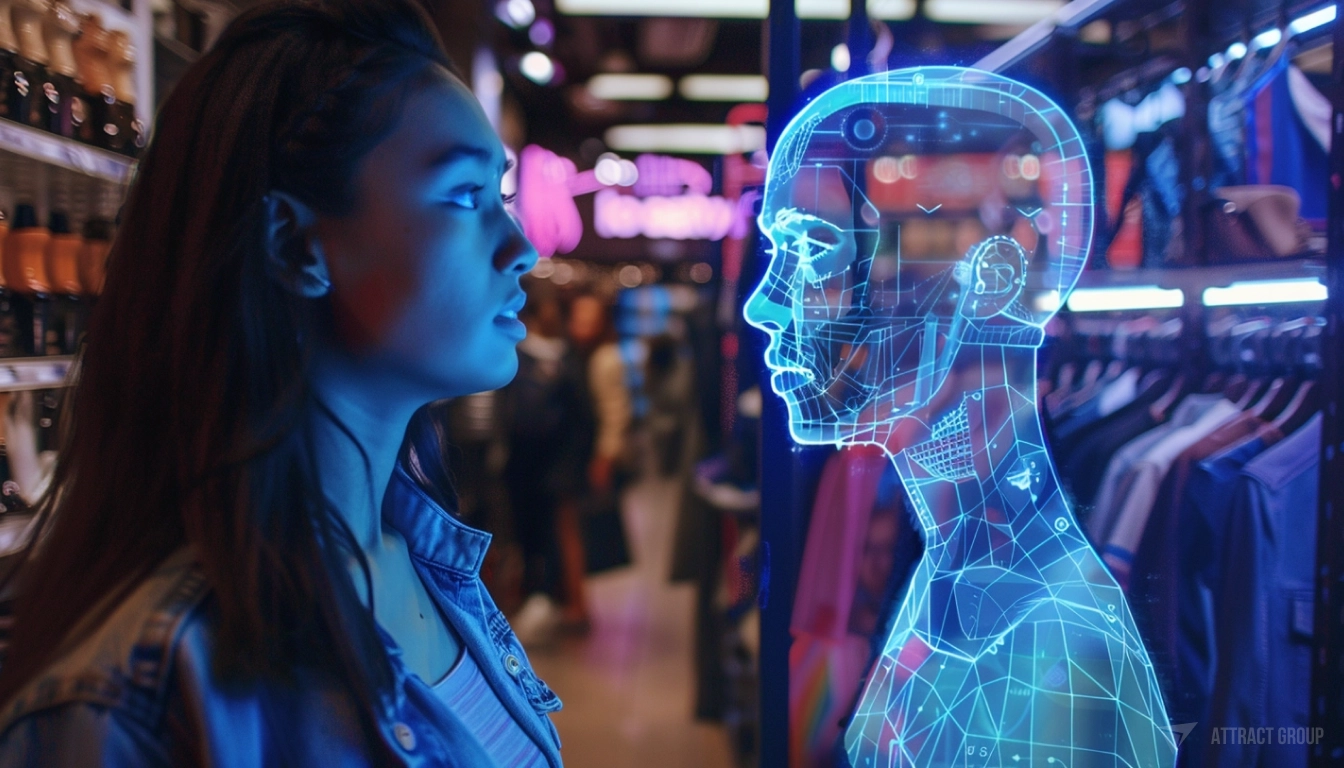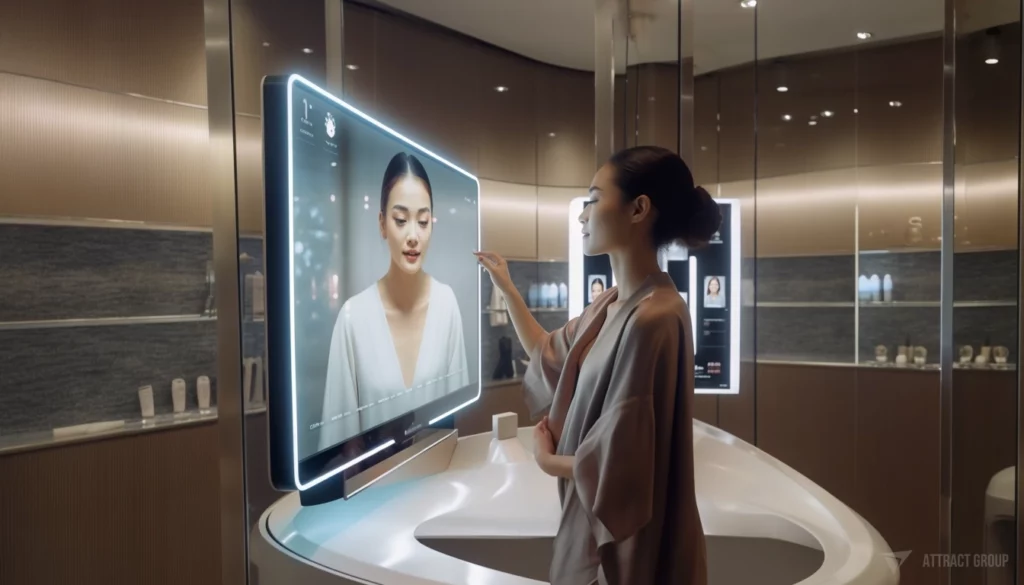🔊 Listen to the Summary of this article in Audio
In an era where customer retention forms the bedrock of retail success, visionary retailers are swiftly moving towards cultivating a loyalty program strategy that resonates with the sophisticated shopper of today. Distance traversed from loyalty’s inaugural transaction-based models to what we now term as ‘Loyalty 2.0’, showcases the industry’s shift towards a customer-centric approach, where the emphasis on creating differentiated value is clear and present.
Brands are increasingly recognizing that conventional retail loyalty programs, once stalwart hooks for consumer allegiance, must evolve to be viewed not merely as cost centers but as potent revenue generators. With brand loyalty hinging on the strength of customer relationships, these pioneering strategies lay a path for providing meaningful experiences that stretch beyond the point of purchase, embedding themselves in the very lifestyle of the consumer.
Embracing Loyalty 2.0 is the strategic foresight that identifies the pressing need for loyalty program for retail stores to offer far more than discounts and deals. This advanced chapter of loyalty is about personalizing each customer’s journey, scaling personalized communication and pitching perfect, hyper-relevant recommendations that are likely to convert engagement into tangible gains.
It is this nuanced understanding and application that positions some brands at the forefront of the loyalty revolution – turning engaged customers into brand advocates and transforming loyalty programs into dynamic entities that continually adapt to market trends and consumer behavior.
Key Takeaways
- Adoption of ‘Loyalty 2.0’ is crucial for strengthening retail customer retention and brand loyalty.
- Future-forward retail loyalty programs serve as revenue generators, not just cost centers.
- Successful loyalty programs prioritize customer relationships and the delivery of a differentiated value.
- Retailers must shift from transaction-focused strategies to personalized, customer-centric experiences.
- Engagement and personalization are key drivers in transforming shoppers into loyal brand advocates.
- Continuous evolution and adaptability in loyalty strategies are imperative to meet consumer expectations.
Introduction to Loyalty Program Strategies
In the contemporary retail arena, the traditional framework of customer loyalty programs is undergoing a significant metamorphosis. As the cornerstone of retail operations and a catalyst for customer retention, modern loyalty program retail strategies are essential for small businesses and large enterprises alike.

Why loyalty programs are important hinges on their transformation from transactional engagements to comprehensive, experience-centered platforms, paving the way to what is referred to as “Loyalty 2.0”. This consumer-driven approach goes beyond mere discounts to foster lasting relationships between brands and their patrons.
A crucial aspect of building a winning loyalty program strategy hinges on adopting a nimble framework adept at offering personalized experiences. This paradigm shift means customer loyalty program ideas do not just track points and purchases but proactively tailor the shopping experience to each individual’s preferences.
Let’s explore how a loyalty program for a small business can translate to a differentiated value proposition for consumers, hinging on the strategic use of personalization:
- Data insights are leveraged to align offerings with customer expectations, driving engagement and ultimately revenue.
- Frictionless experiences are crafted to simplify the shoppers’ journey, making the act of purchasing as seamless as possible.
- Value is extended beyond discount structures to include unique services, exclusive access, and tailored perks, aligned with consumer lifestyles.
By integrating these elements, retailers stand to not only meet the growing expectations of consumers but also cultivate loyalty programs that function as dynamic, profitable ecosystems capable of elevating a brand’s value and ensuring their competitive edge in the market.
“We’ve moved from loyalty as a program to loyalty as a strategy. It’s no longer just about the transaction – it’s about the entire customer journey and the value we add along the way.”
In summary, as we venture into 2024, it is becoming increasingly clear that brands investing in sophisticated, value-driven loyalty strategies will be those that thrive. A successful transformation from Loyalty 1.0 to Loyalty 2.0 will mean redefining the principles that underpin customer engagement, fostering brand affinity, and ultimately driving a sustainably higher share of wallet.
Understanding the Shift in Retail Loyalty Programs
The retail industry is witnessing a pivotal transition in the role and structure of loyalty programs. With heightened consumer expectations and intensified market competition, innovative strategies are becoming indispensable for fostering lasting customer relationships and securing a healthy bottom line. Brands are stepping up, transitioning from traditional points-based offerings to rich, personalized engagement platforms that yield deep customer loyalty and increase lifetime value—groundwork for what’s become known as Loyalty 2.0.
The Evolution of Retail Loyalty
Steering away from the ‘earn and burn’ mentality of yesteryears, today’s loyalty programs are engaging customers at a more profound level, transforming casual buyers into brand advocates. Successful loyalty programs examples include Amazon’s Prime membership, which enhances the overall shopping experience through perks like free shipping and media content, and the Starbucks Rewards program, widely celebrated for its convenience and personalized offers. These examples of customer loyalty programs underscore the shift towards creating meaningful value beyond mere transactions.
Why Loyalty Programs Are Important for Retailers
Loyalty programs are no longer just a marketing afterthought but are central to a brand’s success. Their importance hinges on their ability to engage customers beyond gimmicks. A well-strategized loyalty program, like the AT&T customer loyalty program, leverages a mixture of exclusive services and personalized communication, fostering a sense of belonging and appreciation. These customer loyalty program benefits are crucial in an era where customers crave recognition and rewards that resonate with their lifestyle and preferences.
- Advent of Loyalty 2.0 — an indicator of moving toward personalized, experience-driven customer engagement.
- Successful examples demonstrate the blending of convenience, personalization, and exclusivity in loyalty propositions.
- Retailers invest in loyalty programs to elevate experiences, thereby nurturing a sense of brand allegiance and community.
Modern retailers are tasked with the challenge of revamping their approach to match the dynamic landscape of customer loyalty. It is those retail brands that recognize the intrinsic value embedded within advanced strategies — building on data-driven personalization and robust customer engagement — who will thrive in the competitive domain of 2024 and beyond.

Key Components of a Successful Loyalty Program Strategy
To satisfy the evolving demands of consumers and ride the wave of digital disruption, retailers must build a loyalty program strategy that stands on several foundational pillars. These key components are designed to refine customer interactions, enhance engagement, and leverage data, ultimately driving a successful loyalty marketing strategy in an environment flooded with digital marketing tools and loyalty cards.
Personalization in Loyalty Programs
Today’s loyalty programs must transcend traditional, one-size-fits-all rewards systems. Utilizing the power of predictive analytics and AI, retailers can personalize offers to make them relevant and appealing to each customer. This high level of personalization not only boosts customer engagement but also fosters a stronger connection with the brand.
“In the age of personalization at scale, a loyalty initiative can only achieve its potential by becoming as unique as the customers it serves.” – Michelle Wood, VP, merchant development, Wildfire Systems.
Integrating Technology into Loyalty Programs
The incorporation of advanced technology like retail media networks is instrumental in crafting frictionless customer experiences. Forward-looking retailers are consequently driving investments in technology to seamlessly integrate digital marketing channels and the tactical use of loyalty cards into every stage of the shopping journey.
Reward Structures and Incentives
From discounts and loyalty points to members-only services, reward structures should be compelling and diverse. Forward-thinking brands craft incentives that go beyond generic discounts to include experiences, recognition, and services that provide unique value and demonstrate a deep understanding of what engages their customers.
- Transactional Discounts
- Loyalty Points Systems
- Exclusive Offers
- Unique Experiences or Services
Data-Driven Decision Making
Retailers now acknowledge the critical role of data in optimizing customer interactions. A data-driven loyalty program strategy enables rapid insight generation and swift action, thereby allowing brands to tune their loyalty offers closely to consumer behavior and preferences.
Customer Engagement and Communication
Effective communication channels are paramount to keep loyalty program members both informed and engaged. Regular, value-added interactions enhance the perceived benefits of loyalty programs, which in turn maintains high customer engagement rates and fortifies the relationship between consumers and brands.
- Informative Newsletters
- Feedback Opportunities
- Regular Program Updates
- Exclusive Member Communications
In conclusion, loyalty points and tailored communication strategies play an integral role in cultivating a loyalty program that resonates with consumers. By focusing on these key components, retailers are positioned to foster enduring customer relationships that are rewarding for both the customer and the brand.
Get a free consultation on building an effective loyalty program catered to your retail business
Building a Winning Loyalty Program Strategy for Retail Stores
Creating a customer loyalty program can be a game-changer for retail businesses aiming to enhance customer retention and maximize revenue. The key to crafting an effective customer loyalty strategy lies in understanding the unique needs of your market and customer base, clearly defining program goals, selecting a loyalty model that resonates with your preferred audience, and forming beneficial partnerships and collaborations.

Let’s delve into the essential steps needed to build a loyalty program that not only attracts loyalty program members but also fosters a strong and lasting relationship with them, ensuring long-term business success.
Identifying Your Target Audience
Knowing who your customers are is the initial step in designing a loyalty program that truly speaks to them. Analyzing purchasing habits, preferences, and behaviors provides valuable insights that help tailor a program to meet specific needs, whether you’re establishing a loyalty program for ecommerce or a brick-and-mortar retail store.
Setting Clear Program Goals
Every successful loyalty program starts with a clear set of objectives that aligns with your broader business strategy. Whether the goal is to increase average order value, boost frequency of purchase, or drive engagement on particular product lines, these targets will shape the structure and rewards of your loyalty program.
Choosing the Right Loyalty Program Model
There isn’t a one-size-fits-all formula when it comes to loyalty programs. Options range from points-based systems to tiered membership programs or even paid subscription models. Consider what will work best for your brand and your customers, then build a structured, easy-to-understand program accordingly.
Leveraging Partnerships and Collaborations
Forge strategic alliances with other brands to enhance your loyalty offering. Collaborative efforts can lead to co-branded rewards and exclusive experiences, which add value to your program and help you stand out in a crowded marketplace.
By thoroughly understanding these fundamental components and incorporating them effectively, you will be well on your way to developing a loyalty program that resonates with your customers and delivers tangible benefits to your retail business.
Customer Loyalty Programs: From Ideas to Execution
The journey from conceptualizing to actualizing an effective loyalty program retail strategy is intricate and dynamic. It necessitates a blend of innovative thinking and strategic implementation, all while keeping a keen eye on changing consumer preferences and behavior. This section explores how to turn unique customer loyalty program ideas into operational frameworks that elevate engagement rates and facilitate ongoing strategy adaptation.
Creative Loyalty Program Ideas for Retail
To distinguish their loyalty program from the competition, retailers must brainstorm creative customer loyalty program ideas that align with their brand ethos and provide palpable value to customers. These ideas should be attentive to customer lifestyles and interests while promoting regular engagement with the brand. Fresh, inventive strategies are the keys to igniting initial interest and sustaining long-term participation.

- Incorporating gamified elements to create an interactive and fun experience
- Introducing ‘surprise and delight’ rewards for unpredicted customer delight moments
- Developing community-based activities that encourage social connection among members
- Building a tiered system that underscores exclusivity and premium status with advancement
Implementing Your Loyalty Program
The process of implementing a loyalty strategy involves careful planning, investment in technology, and commitment to organizational resources. Selecting the right platform, ensuring seamless customer experience across touchpoints, and communicating clearly about the benefits of the program are significant steps toward a successful rollout.
- Choose a tech solution that supports easy sign-ups and tracks customer interactions effectively.
- Train your team to deliver a consistent experience and understand the value of the loyalty program.
- Launch with a clear and compelling message that resonates with your target audience.
- Invest in marketing efforts to promote the program to new and existing customers.
Monitoring and Adapting Your Strategy
A static loyalty program is a stagnant one. To succeed long-term, retailers must continuously monitor engagement rates, collect customer feedback, and make adjustments to implement loyalty strategy elements that are not meeting performance benchmarks. Fostering a program’s adaptability to emerging customer needs is cornerstone to retaining its appeal and effectiveness.
| Metrics | Goals | Adaptation Strategies |
|---|---|---|
| Redemption Rates | Increase rate of point redemption | Introduce more flexible redemption options |
| Customer Feedback | Improve customer satisfaction with the program | Customize rewards based on customer input |
| Participation Levels | Grow active program membership | Enhance program visibility and access |
| Repeat Purchases | Increase repeat business through loyalty incentives | Bolster engagement with relevant, targeted communications |
Periodic evaluations and adjustments to the loyalty program are not merely beneficial; they are imperative for sustaining relevance in a market where consumer preferences and habits are in constant flux. Strategies might include embracing digital transformation, launching targeted promotions, or experimenting with new types of rewards to keep the program fresh and engaging.
Our team of experts can craft a customized loyalty solution for your retail store
Loyalty Program Examples and Case Studies
An exploration into the realm of customer loyalty reveals a myriad of success stories, where innovative strategies and insights into consumer behaviors have led to the creation of some of the most successful loyalty programs. Through the lenses of retail giants and nimble small businesses alike, we can discover how loyalty programs have been instrumental in maintaining consumer engagement and driving business growth.
Successful Loyalty Programs Examples in Retail
One hallmark of a successful loyalty program is its ability to leverage customer data for personalized experiences. Starbucks, for example, reshaped its program by utilizing predictive analytics, transforming the coffee-buying experience into a personal journey for each customer. Similarly, Sephora’s Beauty Insider program provides tiered rewards that cater to beauty enthusiasts, encouraging repeat purchases while offering members valuable perks.
Innovative Loyalty Programs for Small Businesses
Small businesses have also carved their niche in loyalty strategies by creating unique programs that resonate well with local demographics. By offering exclusive community events and localized rewards, these businesses have cultivated fierce loyalty. Their agility allows them to design small business loyalty strategies that can respond quickly to customer preferences and market changes, demonstrating the significant impact of personalized attention and community engagement on customer retention.

E-commerce Loyalty Program Case Studies
E-commerce platforms have not been left behind in the loyalty revolution. Programs such as Expedia’s One Key showcase the potential for multi-brand ecosystems, where customers can enjoy a harmonious suite of rewards spanning across various services. These ecommerce loyalty programs illustrate the benefits of creating a seamless reward system that acknowledges and incentivizes consumers across an array of digital platforms.
| Brand | Retail Segment | Rewards Offered | Program Highlights |
|---|---|---|---|
| Starbucks | Coffee and Quick Bites | Free products, exclusive offers | Personalization using AI and predictive analytics |
| Sephora | Beauty and Personal Care | Tiered rewards, special perks for higher tiers | Beauty Insider program with a focus on customer preferences |
| Expedia | Travel | Discounts on various travel services | One Key program that unifies booking experiences across partner brands |
The common thread weaving through these examples of customer loyalty programs is a strategic approach that strikes a delightful balance between understanding what the customer needs and providing them with tailored experiences that are not just rewarding, but intrinsically valuable. Each case study reinforces the premise that creative applications of loyalty concepts — backed by data and insights — can fashion a successful loyalty program within any retail milieu.
Loyalty Programs for Retailers: Measuring Success and ROI
As retailers reinvent customer engagement through loyalty programs, understanding the dynamics of their success and Return on Investment (ROI) becomes pivotal. The ability to measure program success with relevant loyalty program statistics and customer loyalty program benefits offers retailers the insights needed to make data-driven decisions that maximize the efficacy and profitability of their loyalty initiatives.
Loyalty Program Statistics to Know
To effectively gauge the impact of loyalty rewards, retailers must keep a pulse on key metrics such as program participation rates and member engagement levels. These statistics not only reflect the health of a membership program but also help in identifying areas for improvement. Participation rates illuminate the proportion of customers who actively engage with the program, providing a direct measure of its appeal, while engagement levels offer insights into the depth of interaction between customers and the loyalty program.
| Year | Participation Rate | Engagement Level |
|---|---|---|
| 2023 | 75% | High Frequency of Redemptions |
| 2024 | Expected to Increase | Anticipated Deeper Personalization |
Assessing Customer Loyalty Program Benefits
Understanding the power of loyalty rewards does not stop at participation. The qualitative benefits, such as customer satisfaction, retention rates, and the value of feedback provided, are equally vital in assessing a customer loyalty program’s benefits. Brands that listen to their customers, adapt to shifting preferences, and offer tailored rewards often see a marked improvement in customer loyalty and satisfaction — key indicators of a program’s success.
Calculating Return on Investment for Loyalty Programs
The ultimate measure of a loyalty program’s success is the ROI it delivers, signaling its impact on the company’s bottom line. Retailers calculate ROI by comparing the incremental revenue accrued from loyal members’ repeat purchases to the program’s operating costs. In addition, the valuation of intangible benefits, such as brand advocacy and the lifetime value of converting a casual shopper into a loyal customer, must also be considered. To enhance ROI, loyalty programs must balance financial incentives with experiences that resonate more deeply with the consumer’s lifestyle and values.
Achieving a high ROI involves simplifying loyalty program dynamics — making it easy for customers to join, participate, and redeem their loyalty rewards. Transparency around data collection and usage similarly plays a critical role, as it builds customer trust and propensity to share information, enabling the delivery of more personalized and compelling program offerings.
In summary, measuring the success of loyalty programs involves a multifaceted approach that includes both quantitative metrics and qualitative insights. By thoroughly analyzing these factors, retailers can optimize their strategies to deliver compelling loyalty rewards, improve customer relationships, and achieve a strong ROI — proof of a loyalty program’s vitality within a competitive retail landscape.
The Future of Retail Loyalty Programs
As we navigate towards 2024, the landscape of retail loyalty programs continues to undergo profound transformations, adapting to the new waves of consumer needs and technological advancements. These changes are setting the stage for future strategies that will redefine the way brands foster long-lasting customer relationships.
Emerging Trends in Loyalty Program Strategies
Strategic partnerships are rapidly shaping the future of loyalty marketing. Retailers are now joining forces with non-competing brands to offer a more comprehensive reward system. These collaborations open up avenues for a broader spectrum of incentives, satisfying a variety of consumer interests. Additionally, the gravitation towards sustainability initiatives within loyalty programs reflects an acknowledgment of consumers’ increasing environmental consciousness, providing a platform for brands to demonstrate their commitment to eco-responsibility.
Subscription-based models are another trend gaining momentum. These programs offer consumers a sense of exclusivity and convenience, with consistent benefits available for a recurring fee. This shift toward subscription models indicates a market response to consumers’ desires for stability and value in their loyalty program experiences.

Adapting to Consumer Behavior and Expectations
The evolution of loyalty programs is intrinsically linked to the deeper understanding of consumer behavior. Today’s consumers expect more than just transactional value; they seek rewarding experiences and recognition that align with their purchasing journeys. They favor personalization at scale, desiring offers and rewards that feel tailor-made to their preferences and lifestyles.
The trend toward experience over points indicates that retailers must rise to meet these changing expectations by delivering not only financial advantages but also enriching experiences. This involves rethinking the overall value proposition of loyalty programs to encompass benefits that resonate with the personal and aspirational desires of consumers.
The Role of AI and Machine Learning in Loyalty Programs
Artificial intelligence (AI) and machine learning are revolutionizing loyalty programs, enabling unprecedented levels of personalization and predictability. By analyzing vast amounts of data, these technologies empower retailers to create highly targeted rewards schemes, predict future consumer behavior, and automate personalized communications at scale.
Predictive analytics is being used to anticipate the needs and preferences of loyalty program members, ensuring that offers and rewards consistently hit the mark. This data-driven approach not only enhances customer engagement but also optimizes loyalty marketing efforts, making them more cost-effective and impactful. As AI and machine learning technology advance, their role in shaping loyalty programs is set to become even more significant, further fueling personalization, innovation, and heightened customer engagement.
Crafting Loyalty Programs for E-commerce
In the rapidly expanding universe of e-commerce, online retailers are consistently innovating loyalty program strategies to overcome unique challenges and enhance the customer experience. As digital storefronts don’t have the luxury of face-to-face interactions, they must employ creative tactics to build connections with consumers that are equally, if not more, compelling than in traditional retail settings.
Unique Challenges for Online Retailers
The inherent nature of e-commerce amplifies the necessity for loyalty programs agile enough to adapt to an impersonal digital market. These challenges include navigating the complexities of creating homogenous customer experiences across multiple digital platforms, ensuring security in transactions, and establishing trust without the tangibility of a brick-and-mortar presence.
Best Practices for Digital Loyalty Programs
Several best practices stand out in the task of curating digital loyalty programs that resonate with consumers and encourage continual engagement. Personalization, powered by AI, is at the heart of cutting-edge strategies, allowing for predictive personalization that makes each shopping experience unique to the individual. Additionally, programs that lend themselves to simplified yet rewarding experiences are setting the benchmark in customer loyalty.
- Offer rewards such as early access to sales or exclusive merchandise to incentivize higher spending and foster brand connection.
- Provide loyalty points for non-purchase actions like product reviews and social shares, deepening interaction with the brand.
- Implement seamless multi-platform integration for a frictionless cross-channel customer journey.
- Engage in partnerships, providing shared benefits that expand the perceived value of your program beyond typical discounts or giveaways.
Crucial to the ecommerce landscape is not only harnessing the right technology to facilitate these interactions but also constantly reevaluating the rewards program structure to keep pace with evolving digital consumer trends and preferences.
Above all, the core principle of rewarding loyalty within e-commerce should align with an understanding of customer behaviors and desires, delivering a differentiated experience that cultivates lasting relationships through the digital realm.
Loyalty Programs for Small Business: Scaling Customer Loyalty
For the small retailer looking to deepen customer relationships and scale their business, loyalty programs offer a wealth of opportunities. With careful planning and execution, even low-cost loyalty solutions can carve out significant competitive advantages. Engaging with your community through thoughtful loyalty program ideas, small businesses can build enduring connections and nurture brand advocates, all while fitting within a modest budget.

Cost-Effective Loyalty Strategies for Small Retailers
Implementing a loyalty program for small business necessitates a cost-effective approach, as resources are often limited. Yet, with smart strategies, these programs can still pack a punch. Offering exclusive deals or services, leveraging local culture, and investing in digital word-of-mouth through referral incentives are just the beginning. Below are some budget-friendly loyalty program ideas designed to amplify customer loyalty without breaking the bank.
- Simple punch cards that offer a free item after a certain number of purchases
- Referral bonuses that reward existing customers for bringing in new clients
- Special shopping events or early access to sales for loyalty program members
- Collaboration with other local businesses to provide multi-store rewards
This targeted approach not only encourages repeat business but also fosters a sense of community and personal touch that larger businesses often struggle to replicate.
Engaging Your Community Through Loyalty Programs
At the heart of every small retailer loyalty strategy should be community engagement. By positioning your loyalty program as a community-centric initiative, you significantly up the ante for customer involvement. Here’s an overview of how embracing your community’s unique attributes can strengthen ties and reward participation:
- Creation of a loyalty program that rewards customers for community involvement or charity work
- Hosting customer appreciation events showcasing local artists or craftspeople
- Offering loyalty rewards customized to local traditions or festivals
- Partnering with schools or community groups to support fundraising efforts through loyalty program participation
Through these activities, small businesses can turn every transaction into an opportunity for deeper connection, thus proving that well-implemented loyalty program ideas can yield impressive results.
| Loyalty Strategy | Community Focus | Customer Benefit |
|---|---|---|
| Referral Programs | Word-of-Mouth Awareness | Discounts or Bonus Rewards |
| Local Event Partnerships | Support Local Initiatives | Exclusive Access or Experiences |
| Collaborative Rewards | Multi-Store Engagement | Diverse Reward Options |
| Charity Support Bonuses | Social Responsibility | Feel-Good Factor & Rewards |
Integrating these low-cost loyalty solutions with a genuine desire to contribute positively to the community landscape, a small business can truly shine. As the storefronts become beacons of local pride, they naturally draw in a loyal, engaged customer base, ready to champion and support a business that stands for more than just profits.
Conclusion: The Enduring Value of a Robust Loyalty Program Strategy
The true measure of loyalty program benefits is not just observed in short-term gains but in the long-term fortification of customer retention and brand allegiance. An effective loyalty program, woven into the fabric of business strategy, emerges as a pivotal component of modern marketing strategies.
Looking ahead, retailers must continuously curate loyalty programs that resonate deeply with consumers, offering not just rewards for purchases but creating memorable experiences that align with customers’ values and lifestyles. In doing so, they can foster genuine relationships and secure a coveted place in the consumer’s heart and mind.
Leveraging cutting-edge loyalty program software allows businesses to harness vast volumes of data, delivering bespoke experiences that customers nowadays not only appreciate but have come to expect. This personalization is key to maintaining relevance in a competitive market where consumers are inundated with options.
Indeed, a loyalty program is a reflection of a brand’s commitment to its customers. It is a promise, a token of appreciation, and an invitation to engage in a mutually beneficial relationship. As such, sustainability, community involvement, and ethical considerations increasingly feature in loyalty programs, coinciding with the contemporary shopper’s ethos.
Investing in relationships through loyalty programs is not an expense but an invaluable asset that can yield significant dividends in the long run.
Therefore, deploying an effective loyalty program is less about the mechanics of the system and more about engraining the values of the brand into every aspect of the customer experience. Retailers who marry technological capabilities with dynamic and creative rewards planning will distinguish themselves from their competitors, ultimately reaping the loyalty they sow.
Below is an illustration of the core components and the expected benefits of a comprehensive loyalty program strategy:
| Core Components | Expected Benefits |
|---|---|
| Personalized Experiences | Increased Customer Engagement |
| Seamless Integration of Technology | Enhanced Shopping Convenience |
| Sustainability Initiatives | Positive Brand Perception |
| Data-Driven Rewards | Targeted Marketing Efficiency |
By adhering to these principles, retailers can ensure the successful implementation and continuation of loyalty programs that resonate with consumers. Ultimately, a robust loyalty program strategy empowers businesses to not only retain but profoundly engage their customers, fostering lasting connections that transcend the marketplace and cultivate unwavering brand loyalty.
Connect with our experts to start planning a strategic loyalty initiative
FAQ
How to Build a Loyalty Program for Your Business?
To build a loyalty program for your business, start by clearly understanding your target audience’s preferences and behaviors. Align the program’s goals with your overall business strategy. Choose the right model for your loyalty program, whether a points-based, tiered, or subscription-based model. Incorporate elements of personalization and leverage technology for data insights and customer engagement. Ensure simplicity and transparency in how customers can earn and redeem rewards, and continuously gather feedback to refine and improve the program.
What Are the Benefits of Customer Loyalty Programs?
Customer loyalty programs offer numerous benefits, including enhancing the customer experience, increasing repeat business, creating brand advocates, and collecting valuable consumer data. They can also help differentiate your brand in a competitive market, encourage positive word-of-mouth marketing, and provide insights to improve products and services further. Ultimately, loyalty programs contribute to building a stronger connection with customers and improving your business’s bottom line.
Why Are Loyalty Programs Important for Customer Retention?
Loyalty programs are important for customer retention because they encourage customers to continue choosing your business over competitors by rewarding them for their loyalty. These programs build emotional connections by providing value beyond the initial purchase, fostering a sense of exclusivity and belonging. Personalized experiences and rewards promote a positive brand image and increase customer satisfaction, which helps maintain a loyal customer base and enhances customer lifetime value.









